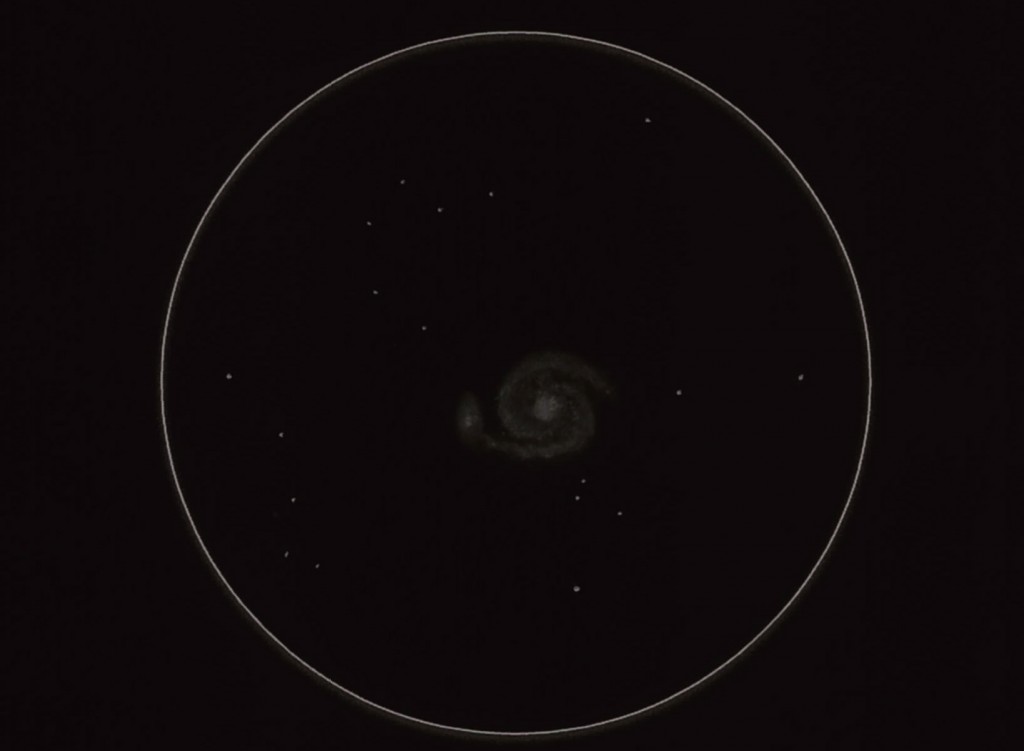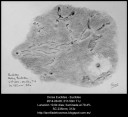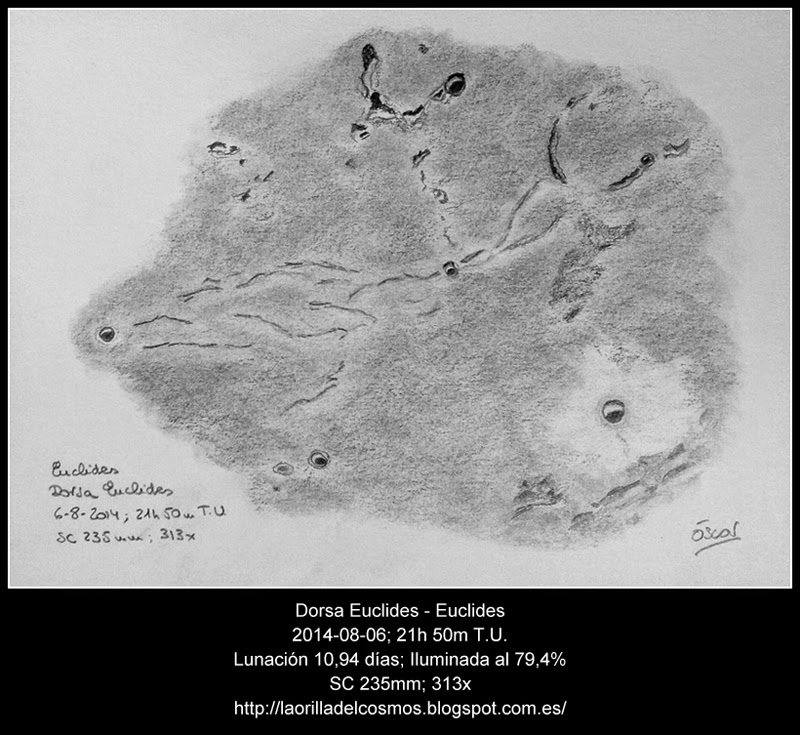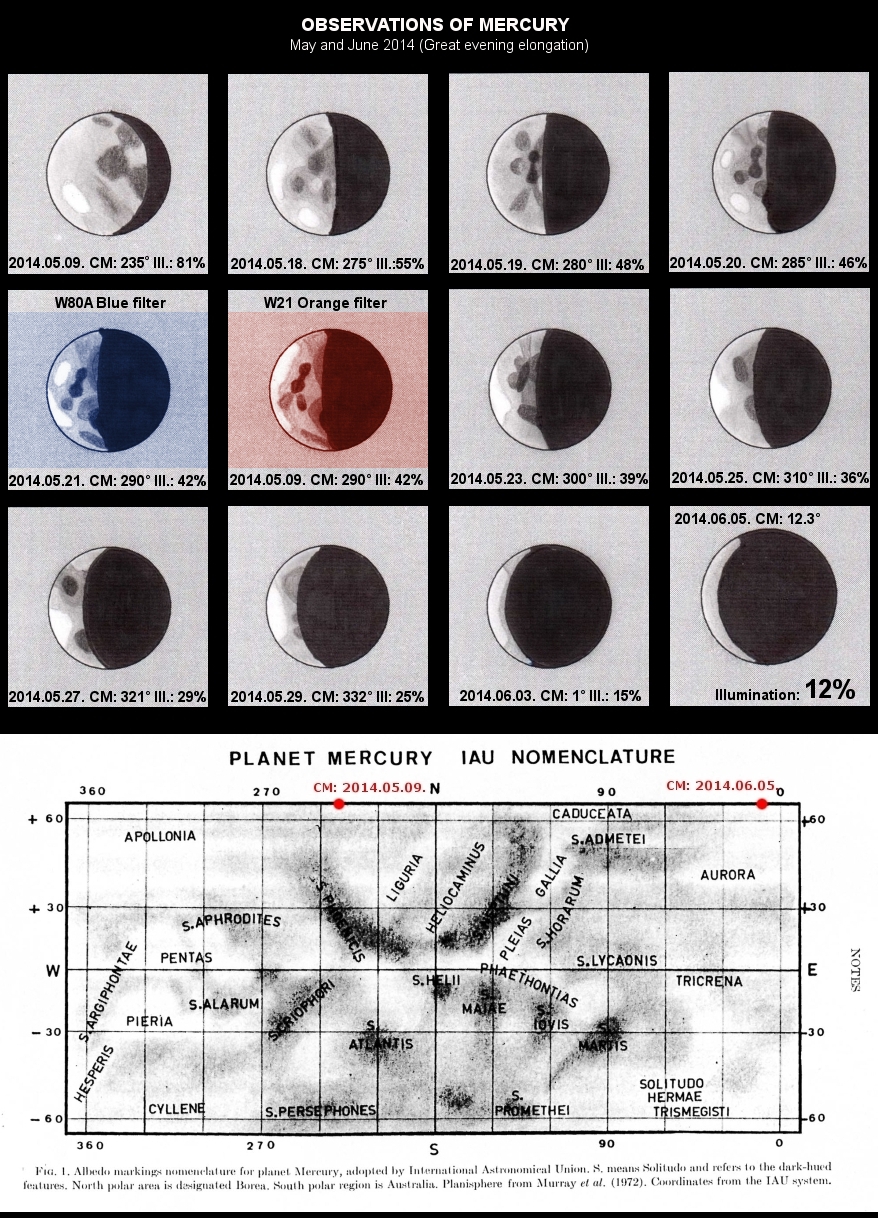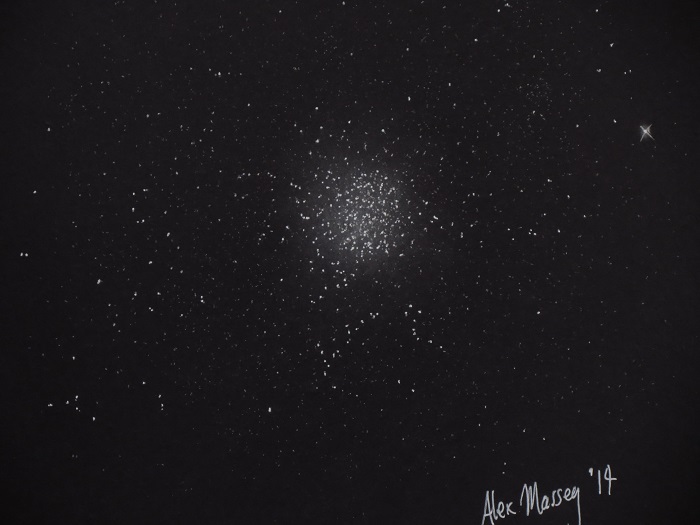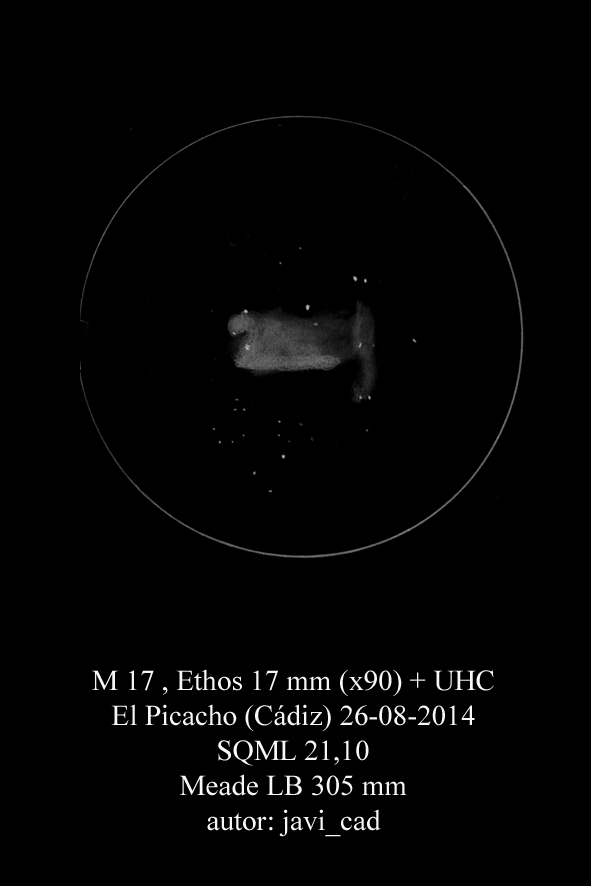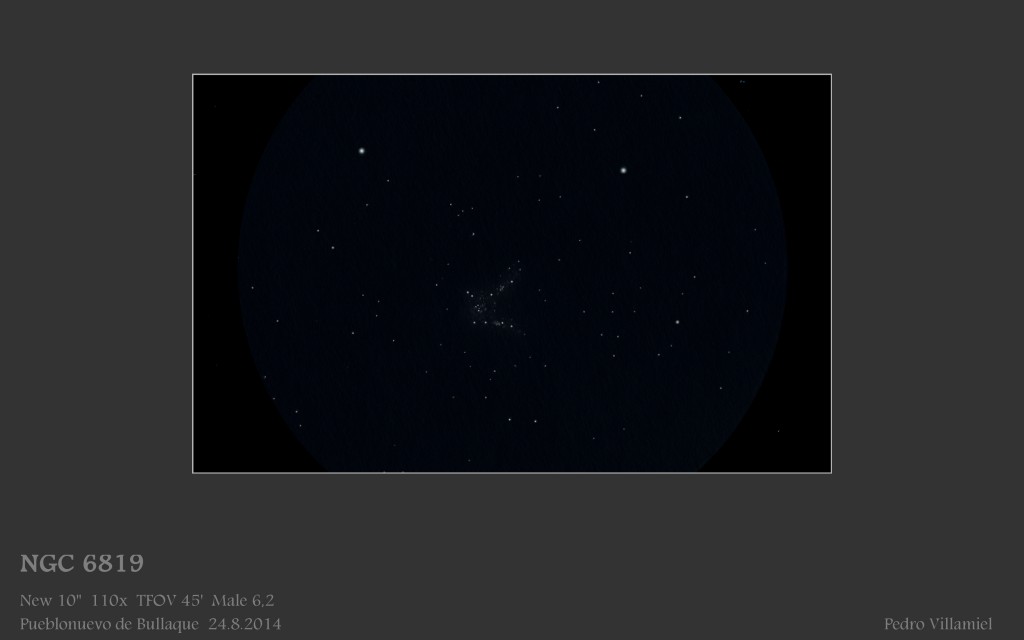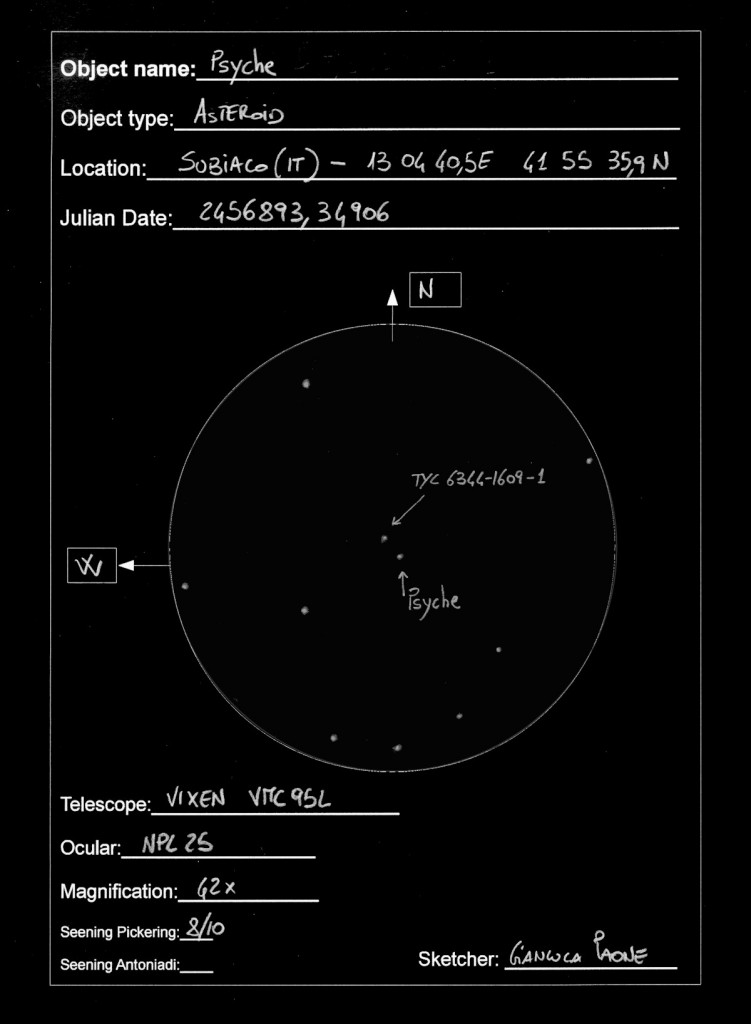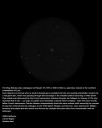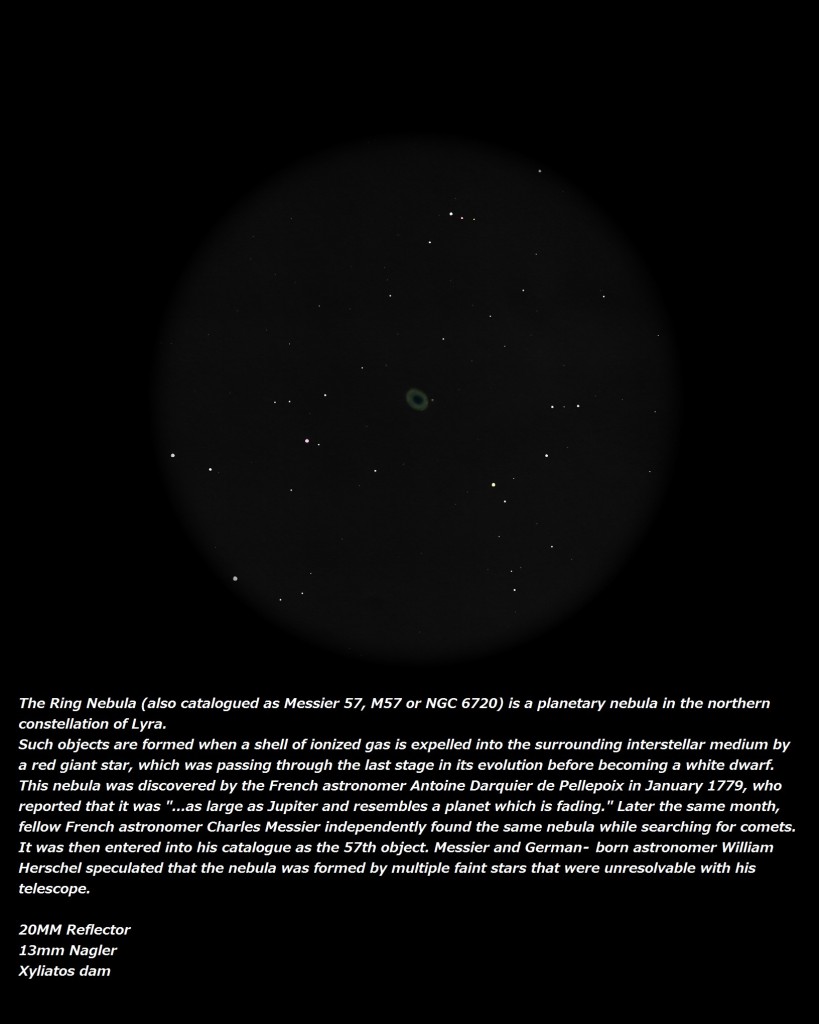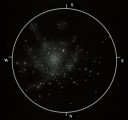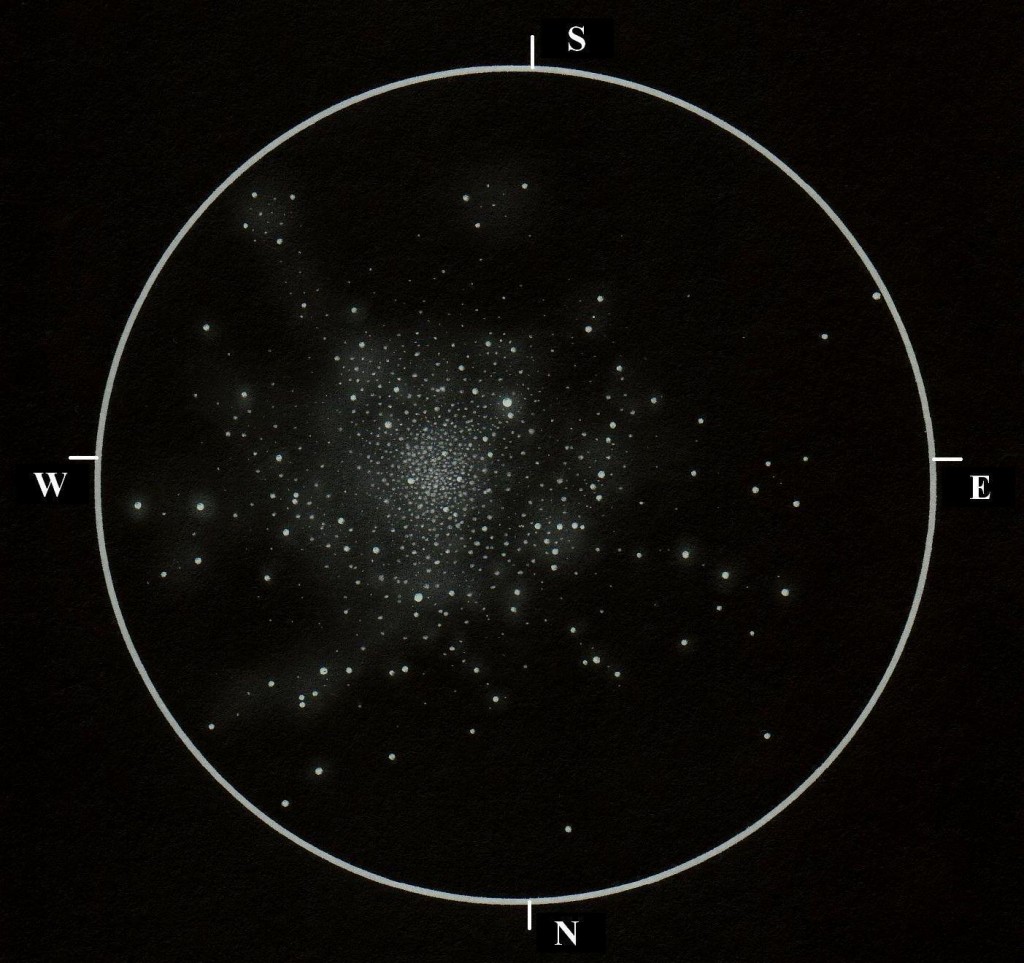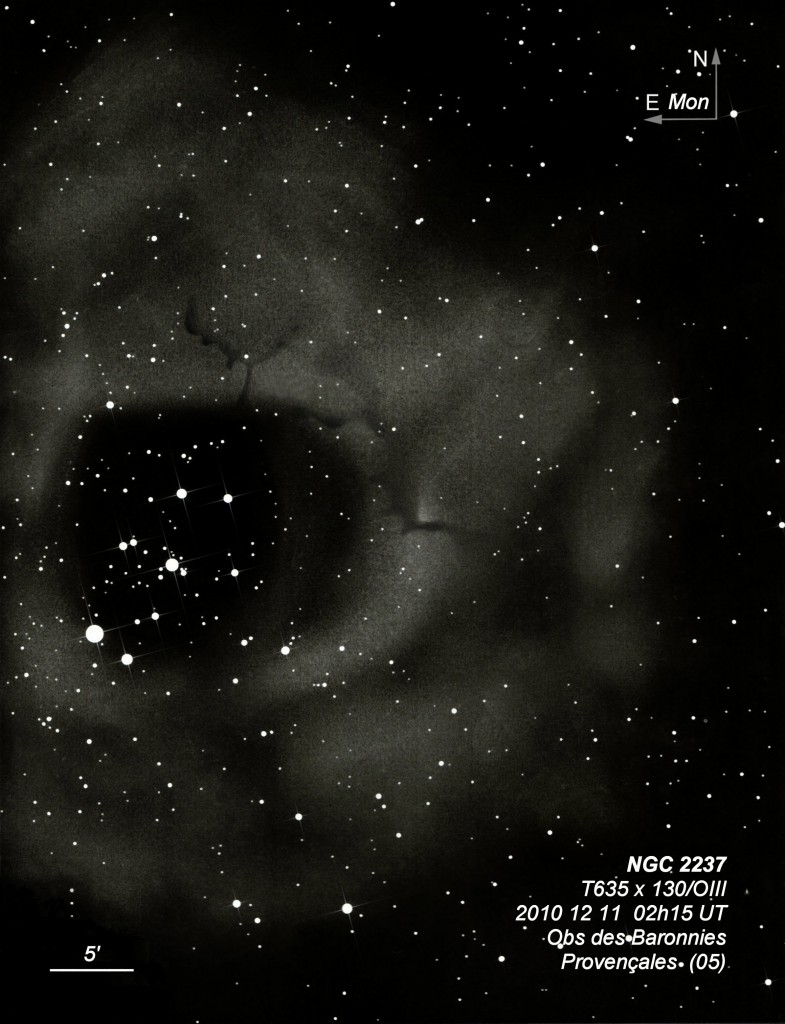
Here is a sketch of an observation I did several years ago: NGC 2237, a close up of NGC 2244, the Rosette nebula, centered on the well known dark veins.
Instrument: dobson Obsession 25”, 635mm
eyepieces: nagler 31mm and Panoptic 24mm
power: 100x and 130x
filters: Lumicon OIII 12nm and Astrodon OIII 5nm
sky: SQM 21.15, limit naked eyes 6.4v
place: Observatoire des Baronnies, southern french Alps
length of observation: 107 min
Classic drawing with graphite, and pencil on 180 gr Canson paper, scanned and processed with Paintshop Pro
More details of the Observatory: www.obs-bp.com, of the observation: http://www.deepsky-drawings.com/ngc-2237/dsdlang/fr
Cheers
Bertrand


